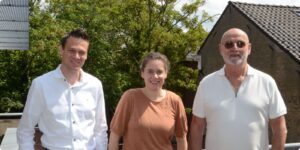Organising a single regional coordination point is becoming increasingly important as we aim to create the best possible healthcare network. In recent years, the Rijnmond region has undertaken ongoing steps to improve the organisation, processes and digital support for transfers and continued cooperation after transfers. In a conversation with Natasja van der Winden, Enovation POINT region manager at the Rijnmondnet Foundation and the driving force behind the technology for this healthcare network, we explore this form of regional cooperation and its success factors.
A single gateway
Many years ago the Rijnmond region decided to better align the supply of hospital care with the capacity of VV&T (nursing homes, care homes and home care, NC&H) organisations. Instead of numerous phone calls and emails, the decision was made to create a single ‘gateway’: the regional coordination point, also known as ReCo. ReCo ensures a better flow of patients in the region through clear coordination and mediation of transfers, among other things. This currently involves all transfers for temporary stays from hospitals and GPs, home care and primary care accommodation (ELV) requests.
A standardised approach
The region not only undertook organisational steps, but also standardised their work method and digital support. By having everyone use the same solution (Enovation POINT), it was possible to introduce a standardised way of working. This reduces the registration effort and simplifies information sharing between organisations and applications.
An additional benefit that has recently become increasingly important is the ability to analyse data on the numbers, types of care and processing times of the flow of patients throughout the care chain. By working together from a single solution, we are able to create reports and draw conclusions, explains Natasja. “I might have a hunch about something, but if I can demonstrate with data that a certain percentage of all patients still had to go to a hospital because of a lack of capacity, we can engage in more useful discussions.”
Data and speaking the language of professionals
The analyses from Enovation POINT help to facilitate discussions about cooperation in the healthcare network. Where are there opportunities to deliver the right care in the right place? A simple question. However, in many cases the workload is so high that it’s sometimes difficult to think about how we can make processes more efficient. “The workload makes people want to cut down a forest with a blunt axe, simply because there is no time to sharpen the axe.”
The analyses help to gain insights, but discussions with professionals remain essential. We can remove obstacles by listening carefully, understanding where there are frustrations and speaking the language of the professionals directly involved in the work process. Healthcare always has and always will involve people, with reason (analyses) and feelings playing an equally important role.
This work is and always will be about people.
Ongoing collaboration
An important starting point for involving people in change is to reuse what you already have. In the Rijnmond region, they used this starting point when incorporating ongoing cooperation after a transfer into the healthcare network. Healthcare providers from the hospital and NC&H now also work together in Enovation POINT on complex wound care, terminal heart failure, intravenous therapy at home, bridging transmural care and other issues.
Supporting ongoing collaboration after a transfer is essential in the trend towards transferred hospital care. For example, people found that there was a lack of information about complex wound care in the old way of working. Now that all the required wound care information is available in Enovation POINT, healthcare staff work together on about 30 patient files a month.
A decisive factor
The Rijnmond region is placing growing importance on supporting the healthcare network and coordinating integrated processes. But if we ask Natasja about the ultimate decisive factor in taking on certain use cases, such as complex wound care, and not others (yet), the answer is simple: “It all depends on enthusiasm and timing. On the number of people who want to act as ambassadors for something at a given time. As I said before, this work is and always will be about people.”



